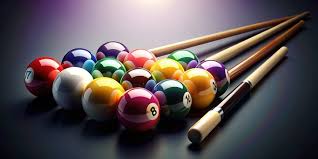Differences between Carbon Fiber Pool Cues and Ordinary Pool Cues
When it comes to the game of pool, the choice of cue can make all the difference in performance and precision. Carbon fiber pool cues have emerged as a popular alternative to traditional wooden cues, offering a range of benefits that can enhance your game. Let's delve into the compelling distinctions between carbon fiber and ordinary pool cues.
Material and Durability
Carbon Fiber Cues: Made from a composite material, carbon fiber cues are renowned for their durability and resistance to warping. The high-tech material ensures that the cue maintains its shape and performance over time, even in varying environmental conditions.
Ordinary Cues: Traditional wooden cues, while aesthetically pleasing, are more susceptible to damage from moisture and temperature changes. They can warp or crack, affecting the accuracy and feel of your shots.
Weight and Balance
Carbon Fiber Cues: These cues are lighter than their wooden counterparts, which can be an advantage for players looking for a cue that is easier to handle. The lightweight nature of carbon fiber also allows for better balance, leading to more controlled shots.
Ordinary Cues: Wood cues tend to be heavier, which can be beneficial for power shots but may require more effort and strength to control, especially for extended play sessions.
Impact and Feel
Carbon Fiber Cues: The impact of a carbon fiber cue is often described as crisp and solid, providing excellent feedback to the player. This can lead to a more intuitive sense of how much force to apply for different shots.
Ordinary Cues: Wooden cues offer a different feel, with a softer impact that some players prefer. However, they may not provide the same level of feedback, which can affect shot accuracy.
Aesthetics and Customization
Carbon Fiber Cues: Carbon fiber cues can be designed with a variety of finishes and colors, offering a modern and sleek look. They also allow for more customization options, such as different tip materials and ferrule designs.
Ordinary Cues: While wood cues offer a classic and traditional appearance, they are limited in terms of customization. The natural grain of the wood can be beautiful, but it lacks the versatility of carbon fiber in terms of design.
Cost and Value
Carbon Fiber Cues: Although carbon fiber cues can be more expensive upfront, their durability and performance often justify the investment. They are less likely to require replacement due to damage, which can save money in the long run.
Ordinary Cues: Wood cues are generally more affordable, but they may require more frequent maintenance and replacement, which can add up over time.
Conclusion
In conclusion, the choice between a carbon fiber pool cue and an ordinary pool cue depends on your personal preferences, playing style, and budget. Carbon fiber cues offer a modern, high-performance option that is durable and customizable, while traditional wooden cues provide a classic feel and aesthetic. Consider the differences and choose the cue that best aligns with your game and aspirations as a pool player.


